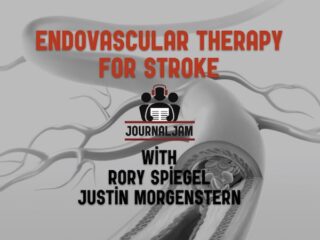Journal Jam 10 Part 2 Endovascular Therapy for Stroke
In this part 2 of EM Cases Journal Jam podcast on Thrombolysis and Endovascular Therapy for Stroke Justin Morgenstern, Rory Spiegel and Anton Helman do a deep dive into the world's literature on endovascular therapy for stroke. While the evidence for endovascular therapy is stronger than that for IV systemic thrombolysis for stroke outcomes at 90 days, a closer look at the literature reveals that a very small minority of patients are eligible for endovascular therapy and we still don't know which patients benefit most from endovascular therapy...









